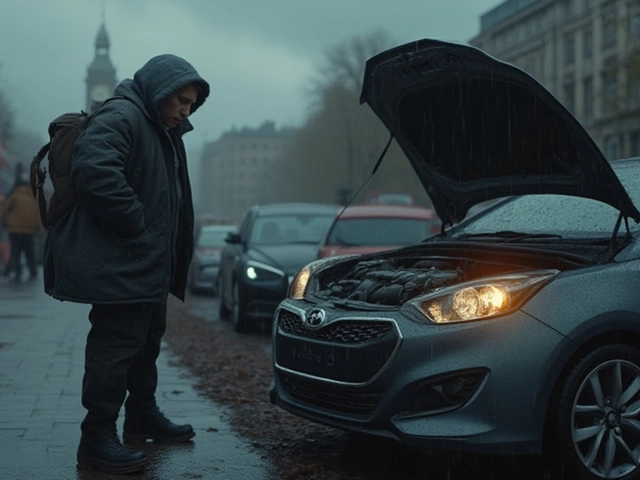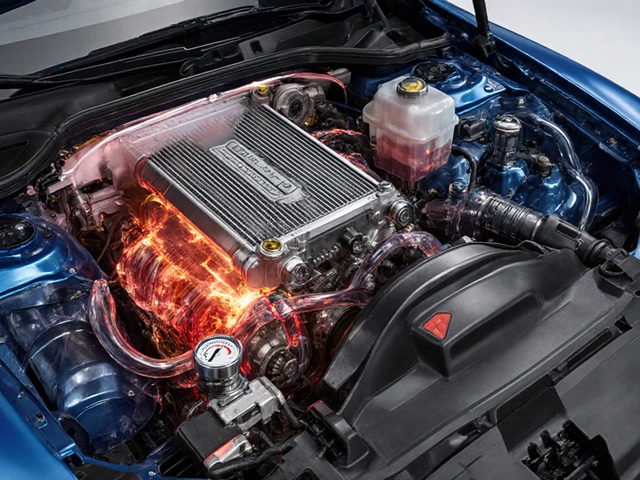Ever noticed one of your wipers streaking across the windshield, barely clearing the rain, while the other seems fine? You might wonder, "Do I need to buy two windshield wipers, or can I just switch out the bad one?" This question pops up for just about everyone who drives, and guess what—a lot of people are replacing wipers the wrong way. A crystal-clear windshield is about more than a clean look. It’s your eyes to the road when the weather’s a mess. Mess up your wipers, and you’re playing with safety. Some drivers don’t even realize there’s an actual reason why stores and mechanics usually sell wipers in pairs. This article will answer if you really do need to buy two windshield wipers, dig into why both might need changing, and how you can tell exactly what to do for your car.
How Windshield Wipers Work and Why They Matter
You’d be surprised at how much goes on with those simple strips of rubber swiping back and forth. Windshield wipers are built to clear water, dirt, snow, and bugs from your view—often in seconds. They work in rough conditions, with rain hammering down or winter salt crusting up your glass. Most wiper blades are made of a rubber compound designed to flex, press against the glass, and make tight, even contact. Over time, things like ultraviolet rays, heat, and even car wash chemicals break down the material. The leading edge—what actually touches your windshield—can harden, crack, or get little nicks. Once the blade loses that perfect contact, it starts to streak, squeak, or flat-out miss parts of your windshield.
Let’s get specific. Wipers don’t wear evenly. Often, the driver’s side and passenger’s side wiper see slightly different use and pressure. For most cars, the driver’s wiper is usually a few inches longer. Curious fact: the average car uses twenty gallons of washer fluid a year, and that fluid can actually accelerate blade wear. And here’s something you never hear at the auto parts store: about two-thirds of traffic accidents in rain happen because drivers can’t see well—not because of road slickness. Wipers play a huge role, so don’t take them for granted.
Do Both Wipers Need to Be Replaced at the Same Time?
The short answer: most of the time, yes, you should replace both wipers together. Here’s why: even if only one blade shows obvious signs of trouble (like squeaks or smears), both have experienced nearly the same weather, sun exposure, and usage. The rubber ages at about the same rate. So, if one is worn out, odds are the other isn’t far behind, even if you can’t see damage yet.
Some mechanics even point out something interesting—mixing old and new wipers can cause uneven clearing and new streaks. Old blades don’t flex as well as new ones, and if one’s not pressing firmly enough, it leaves behind a foggy film. Mixing brands or types (like putting a beam-style wiper on one side and a frame-style on the other) might mess with the look and performance, too.
Think about convenience: If you change both at once, you cut down trips to the store or garage. Every time rain suddenly starts on a road trip, you avoid fumbling with replacements. Plus, sometimes there are deals for buying wipers as a pair—you end up saving a couple of bucks in the long run.
Still, not all car models have wipers that wear at the same speed. In rear-wiper setups or on some European cars, blade size and design might differ a lot, so it’s good to check them individually if you’re on a tight budget. But if you want to keep things easy and safe: get them both and be done with it.

How to Figure Out the Right Wiper Blade Sizes
Mixing up wiper sizes is a classic DIY mistake. You pop the old blade off at the auto parts store, grab one that says "22 inches," and get home to discover it barely fits (or swings over the edge of your windshield). Every car has a specific wiper size for each side: usually, the driver’s side blade is longer than the passenger’s, but not always. Sometimes, rear wipers have their own size, and they can’t just be swapped with front blades either.
The fastest way to know the right size? Check your owner’s manual—there’s usually a chart with exact measurements. If you lost the manual, look up your car on the store’s electronic wiper fitment guide. Most auto stores—online and brick-and-mortar—let you punch in your make, model, and year. Double-check those numbers. If in doubt, measure the old blade from end to end. Here’s a quick table showing some common sizes:
| Car Model | Driver's Side (inches) | Passenger's Side (inches) |
|---|---|---|
| Honda Civic (2019) | 26 | 18 |
| Toyota Camry (2022) | 26 | 18 |
| Ford F-150 (2020) | 22 | 22 |
| Volkswagen Golf (2021) | 24 | 19 |
| Chevrolet Malibu (2018) | 24 | 20 |
Pay attention to connector types too: common ones are hook, pin, or bayonet. Sometimes, universal adapters fit multiple cars, but if in doubt, match the style. Don’t just eyeball the fit. Misfitting blades won’t clear rain properly and can even tangle up, causing damage to the wiper system or scratching the glass. That’s a repair you don’t want.
Tips for Getting the Most Out of Your Wiper Blades
Wiper blades aren’t exactly cheap anymore. Some high-end "beam" blades cost $30 or more each. So, it pays (literally) to squeeze some extra life out of them. First rule: keep your windshield clean. Dirt and sand grind away the rubber edge every time you turn them on. Use washer fluid regularly, not just water, to help flush away debris. If it hasn’t rained in a while, don’t turn on dry wipers. That’s like sandpaper on glass.
Here’s a hack: once or twice a month, wipe down the blade with a damp paper towel or rag. You’d be surprised how much grime comes off, and this keeps the rubber supple. Never, ever use wipers to clear ice. That’s a fast track to splitting the rubber or even snapping the blade. Instead, use a dedicated scraper. If you park outside, lift the blades up during snow or ice storms, so they don’t freeze to the glass overnight. Sun is a big enemy too—UV rays dry out the rubber. If possible, park in the shade or use a windshield sunshade for protection.
Keep an eye on how the blades move. If you notice stuttering, chattering, or if the wipers make a clicking or slapping sound, don’t ignore it. Sometimes, a good cleaning of both the blade and glass helps, but if issues keep popping up—even just on one side—it’s probably time to swap both for fresh ones.

When Should You Change Your Windshield Wipers?
Classic advice is to swap blades every six months. But real-life driving isn’t so textbook. Heat, road conditions, and even your local climate make a difference. Some places (like the Pacific Northwest or Florida) ask a lot more from their wipers than dry, sunny regions. Here are clear signs it’s time to change:
- Streaks or lines on windshield after every pass
- Squeaking or skipping, even on a wet glass surface
- Visible cracks, splits, or missing bits of rubber
- Wiper not making contact with the glass (parts left uncleared)
- Blade feels rough, sticky, or warped to the touch
Pro tip: Mark a date on your calendar or set a phone reminder twice a year. Right before winter and after spring are good times to swap, as changing weather quickly wears down blades. Some brands offer a “wear indicator” that appears as the blade degrades. But no matter the claims, if you notice poor performance, don't hesitate—replace them early.
And if you’re asking the original question—do I need to buy two windshield wipers? The answer: replace both, match the right sizes, and you’ll see clear on every drive. It’s a small job with a big payoff for visibility and safety.






